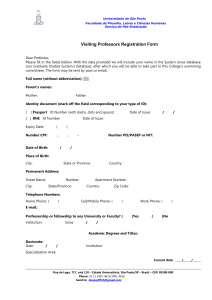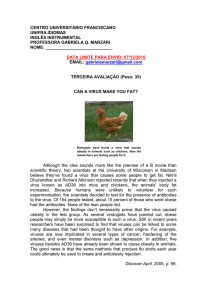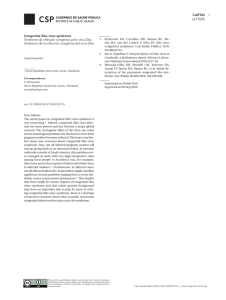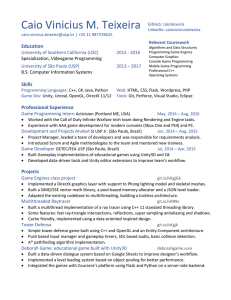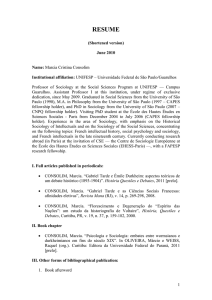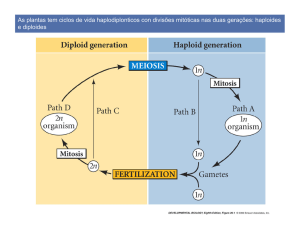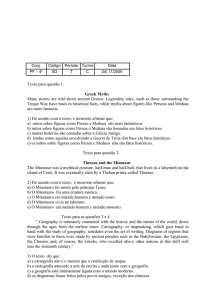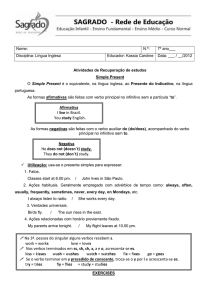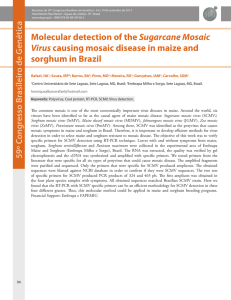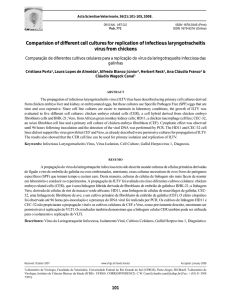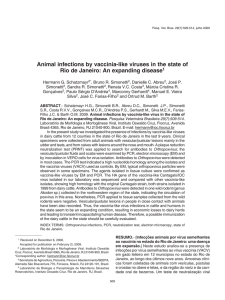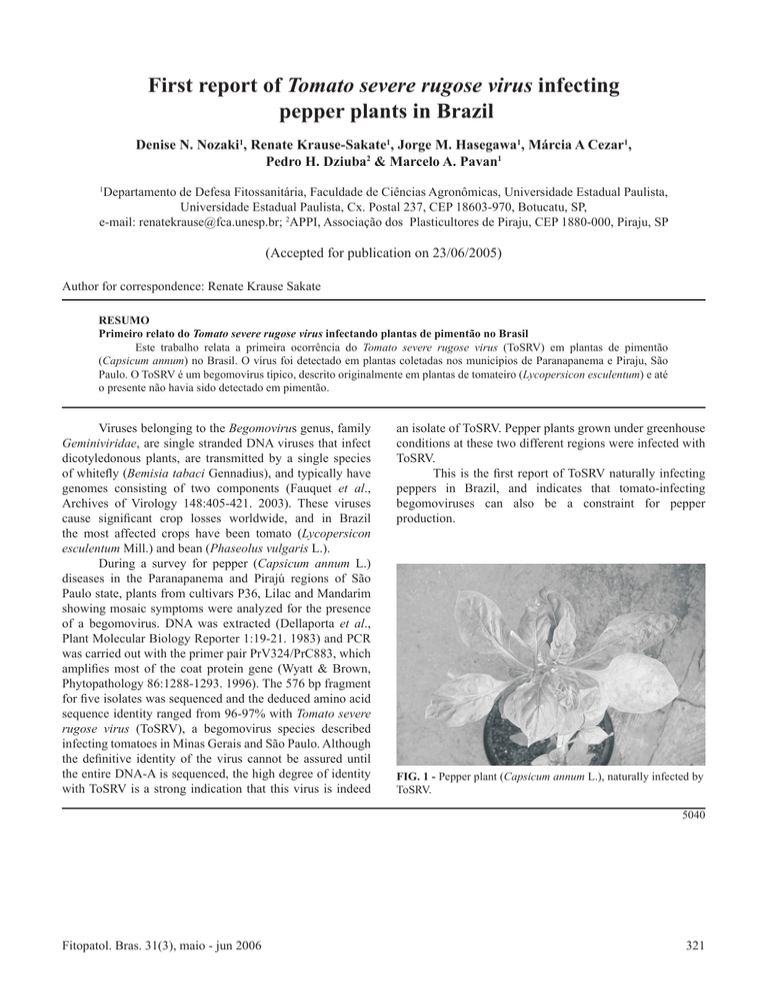
First report of Tomato severe rugose virus infecting
pepper plants in Brazil
Denise N. Nozaki1, Renate Krause-Sakate1, Jorge M. Hasegawa1, Márcia A Cezar1,
Pedro H. Dziuba2 & Marcelo A. Pavan1
Departamento de Defesa Fitossanitária, Faculdade de Ciências Agronômicas, Universidade Estadual Paulista,
Universidade Estadual Paulista, Cx. Postal 237, CEP 18603-970, Botucatu, SP,
e-mail: [email protected]; 2APPI, Associação dos Plasticultores de Piraju, CEP 1880-000, Piraju, SP
1
(Accepted for publication on 23/06/2005)
Author for correspondence: Renate Krause Sakate
RESUMO
Primeiro relato do Tomato severe rugose virus infectando plantas de pimentão no Brasil
Este trabalho relata a primeira ocorrência do Tomato severe rugose virus (ToSRV) em plantas de pimentão
(Capsicum annum) no Brasil. O vírus foi detectado em plantas coletadas nos municípios de Paranapanema e Piraju, São
Paulo. O ToSRV é um begomovírus típico, descrito originalmente em plantas de tomateiro (Lycopersicon esculentum) e até
o presente não havia sido detectado em pimentão.
Viruses belonging to the Begomovirus genus, family
Geminiviridae, are single stranded DNA viruses that infect
dicotyledonous plants, are transmitted by a single species
of whitefly (Bemisia tabaci Gennadius), and typically have
genomes consisting of two components (Fauquet et al.,
Archives of Virology 148:405-421. 2003). These viruses
cause significant crop losses worldwide, and in Brazil
the most affected crops have been tomato (Lycopersicon
esculentum Mill.) and bean (Phaseolus vulgaris L.).
During a survey for pepper (Capsicum annum L.)
diseases in the Paranapanema and Pirajú regions of São
Paulo state, plants from cultivars P36, Lilac and Mandarim
showing mosaic symptoms were analyzed for the presence
of a begomovirus. DNA was extracted (Dellaporta et al.,
Plant Molecular Biology Reporter 1:19-21. 1983) and PCR
was carried out with the primer pair PrV324/PrC883, which
amplifies most of the coat protein gene (Wyatt & Brown,
Phytopathology 86:1288-1293. 1996). The 576 bp fragment
for five isolates was sequenced and the deduced amino acid
sequence identity ranged from 96-97% with Tomato severe
rugose virus (ToSRV), a begomovirus species described
infecting tomatoes in Minas Gerais and São Paulo. Although
the definitive identity of the virus cannot be assured until
the entire DNA-A is sequenced, the high degree of identity
with ToSRV is a strong indication that this virus is indeed
an isolate of ToSRV. Pepper plants grown under greenhouse
conditions at these two different regions were infected with
ToSRV.
This is the first report of ToSRV naturally infecting
peppers in Brazil, and indicates that tomato-infecting
begomoviruses can also be a constraint for pepper
production.
FIG. 1 - Pepper plant (Capsicum annum L.), naturally infected by
ToSRV.
5040
Fitopatol. Bras. 31(3), maio - jun 2006
321

